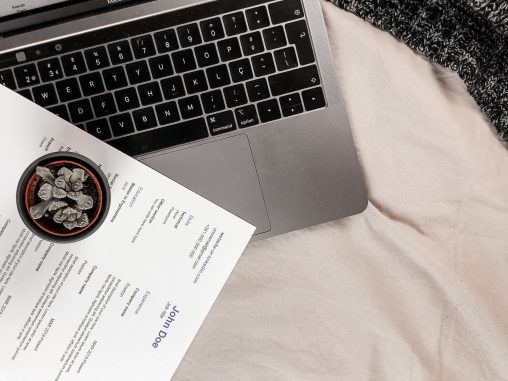A CV is the one document (along with possibly a covering letter) that will get you an interview. The CV has to match the opportunity, of course, as tailoring a CV to the job is fundamental. But there are also some dos and don’ts – some of which you may not be aware of, depending on when you last updated or wrote your CV.
Here is our brief guide to the things to do and the things to not do, when compiling your CV.

Do ‘customise’ your CV for the opportunity
As mentioned above, each CV should be tailored to the opportunity – you need to read the job description carefully and pick out experiences from your working life (or your academic life) that will be of interest to the recruiter.
Do write a strong ‘personal profile’
The personal profile, also known as the personal statement or personal summary, is a brief section right at the beginning of your CV that ‘sells’ you to the reader. It should catch their interest and entice them to read the rest of your information.
Do keep it relevant
There is no point in adding everything you have done in your career so far if it’s not relevant to the role for which you are applying.
Do show that your technical qualifications are up to date
If your qualifications in a particular discipline or subject are essential for the role, don’t forget to include them. It’s also helpful to talk about methodologies that you use in relation to your specialism, if any, again, only if they are relevant.
Do include interesting or unusual hobbies
Walking, reading, watching films, and cycling are all great hobbies, but they can be left off. If you have more unusual hobbies, especially those that provide useful skills in your work life, (say a scout leader?) then include those.
Don’t tell fibs – if you do like to just walk, read, visit pubs and do a bit of gardening, then that’s all fine, but you can leave the section off your CV.
Do use active verbs
Make sure you use active or ‘action’ verbs when talking about what you achieved and your experience.
Words like:
- Actioned
- Implemented
- Created
- Developed
- Defined
- Managed
- Operated
- Established
Avoid phrases like ‘Led a team…’, instead, use ‘Managed a team that delivered…” for example.
Do make it visually appealing
This doesn’t mean pictures, or graphics of any kind, rather, just a clean, clear layout.
For example, bullet points are a good way to get a block of useful information over – it will help anyone reading it to see at once if you have the key skills and experience needed.
Clarity means that your CV will shine against other, more cluttered applications.
CV-Library has a new-look CV Templates & examples section to help you compile a successful CV, or at least give you further guidance.
Don’t include your age or your date of birth
Age discrimination is unlawful since the Equality Act 2010 (actually coming into force in October 2012), along with other forms of discrimination. You also shouldn’t include your marital status or any dependents.
Don’t include irrelevant experience
Everything that is on your CV should have some relevance to the job for which you are applying. For instance, if you’re applying for a technical role but say did a summer job at Marks & Spencer, then that is not relevant. However, if you learned a new skill as a result of that employment, say handling unhappy customers and making them happy, then that could be a skill you include (it doesn’t have to say where you learned it) but you can talk about it in the interview, of course.
Don’t include social media handles or accounts
No need, if the recruitment or HR manager is interested in your social media profile(s), they’ll find them. On that note, make sure that any profiles you have are ‘CV-friendly’ – appropriate profile pictures and posts. Like a polite conversation, perhaps avoid religion, politics or other similar subjects on your social media feeds.
Don’t include a photograph
Unless it’s requested (which would be very unusual) then it’s not typical to include a picture, and could lead to unintentional age discrimination, which is unlawful under the Equality Act 2010. It could lead to other unintended discrimination, too.
Don’t use a ‘fancy’ font or typeface
Let me be clear: NOT Comic Sans.
Arial, Courier, Calibri or Times New Roman are ideal, generally available for use and importantly are easy to read.
Don’t be funny
Humour doesn’t work on CVs so don’t include it; no puns, no fun; but perhaps save some light humour for the interview if the mood is right.
Let’s end with some positives:
Do proofread it
Proofread it, carefully, more than once. Get someone else, a friend or a loved one, to do it too. It’s very hard to review our work, so ‘peer review’ is a great way to go about it!
Do provide a covering letter
This is recommended in all situations. It may have been called for, for the job you are interested in. If not, it is always worth providing a cover letter, this is where you can make sure that whoever is doing the hiring knows that you are the person for the role, or at the very least, that your CV should be read.
Next steps
If you need more guidance, please check out CV-Library’s full Career Advice section. If no further help is needed, don’t forget to get someone else to check your CV before you send it.
Good luck with your next job application and your next interview!
